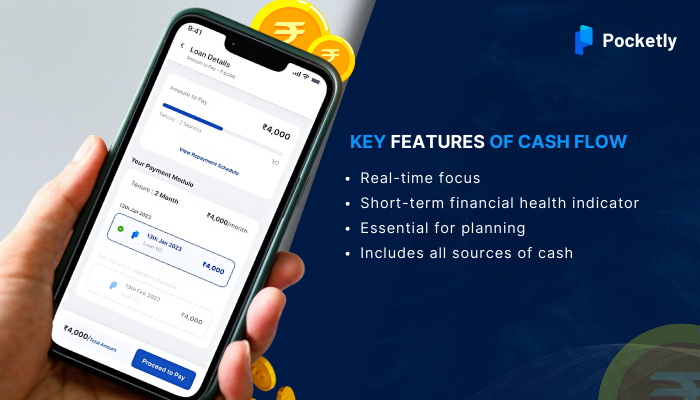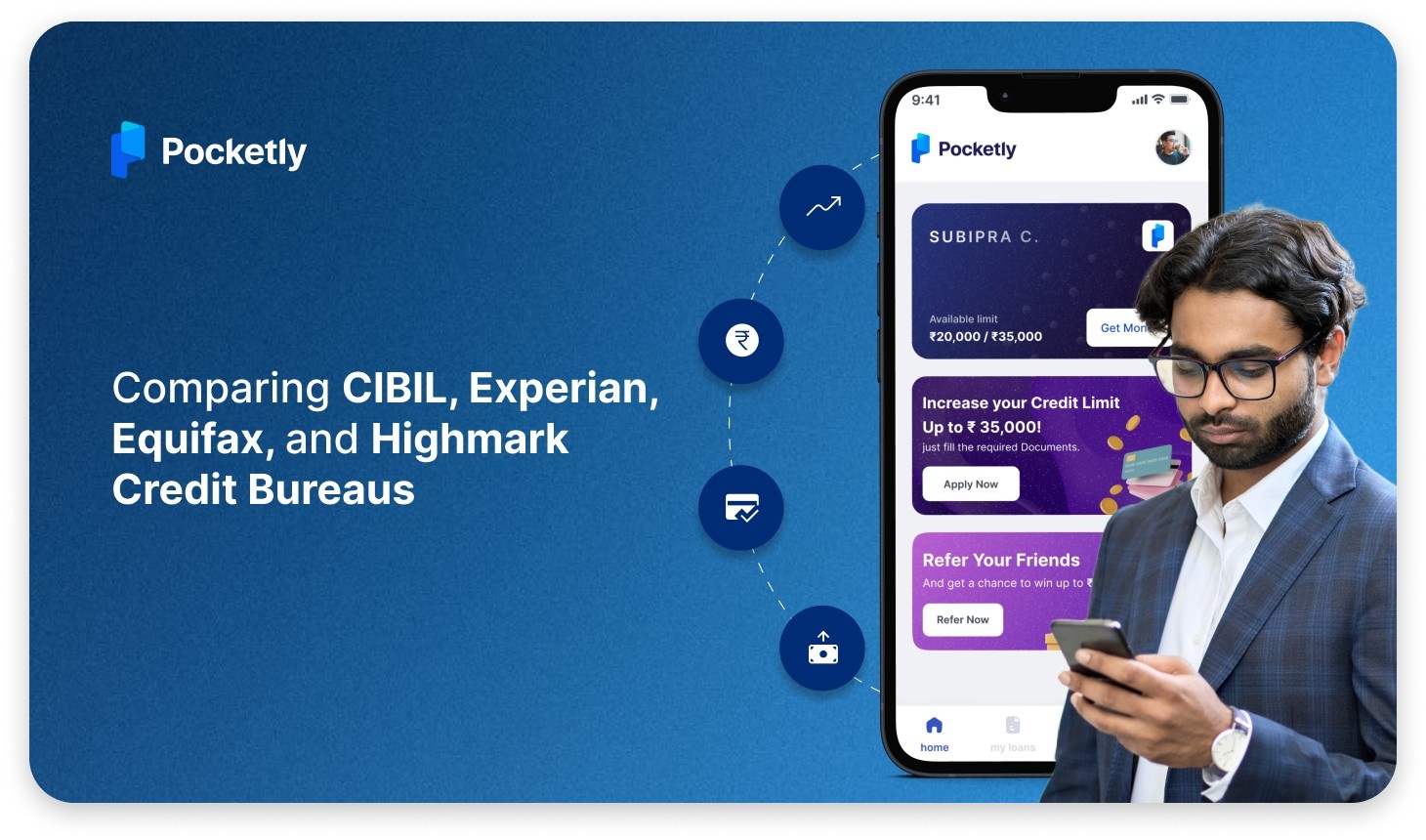
Managing money is about more than just tracking profits; it’s about knowing exactly where your cash is coming from and where it’s going. That’s where cash inflow and outflow come in. These two terms form the foundation of healthy financial management, especially if you’re running a business.
Here’s why it’s worth paying close attention: According to a study by Preferred CFO, 82% of small businesses fail due to poor cash flow management.
This statistic alone highlights how crucial it is to maintain a steady and well-monitored flow of cash. When inflows don’t keep up with outflows, even profitable businesses can quickly run into trouble, missing payments, defaulting on loans, or halting operations.
In this guide, we’ll break down the definitions, differences, and real-world impact of cash inflow and outflow. Whether you're a business owner, freelancer, or just someone looking to sharpen your financial understanding, this is knowledge you’ll want in your toolkit.
What Is Cash Flow?
Cash flow simply refers to the movement of money in and out of your business (or personal finances) over a specific period. It’s all about tracking how much cash you’re receiving (inflows) and how much you’re spending (outflows). To make sure more money is coming in than going out or at the very least, that your business has enough cash on hand to cover its expenses.
Unlike profits, which can look good on paper but remain unpaid for weeks or months, cash flow focuses on actual cash transactions—what you’ve received and what you’ve paid.
Why Is Cash Inflow Important?
You might have the best business idea, a loyal customer base, or even growing profits, but none of that matters if there’s no money actually coming into your account. That’s where cash inflow becomes crucial.
Here’s why cash inflow deserves your attention:
- Keeps your business financially healthy
- Regular inflow ensures that you always have enough cash to cover your expenses, from salaries to rent and raw materials.
- Improves your ability to plan and grow
- When you can predict your cash inflows, it’s easier to plan for future investments, marketing campaigns, or business expansion.
- Helps build financial stability
- Strong and consistent inflows reduce the need for borrowing and give you a safety net during slower periods.
- Boosts confidence with investors and lenders
- A healthy inflow shows that your business is generating real income, which makes it easier to raise funds or secure loans when needed.
- Allows you to reinvest in your business
- The more money coming in, the more you can put back into better tools, bigger teams, or new offerings—helping you grow faster.
Key Features of Cash Flow
- Real-time focus – It tracks actual cash movement, not just sales or invoices.
- Short-term financial health indicator – Shows whether you have enough cash to cover day-to-day expenses.
- Essential for planning – Helps you decide when to invest, hire, expand, or hold back.
- Includes all sources of cash – Whether it’s from operations, financing, or investing.
Benefits of Good Cash Flow Management
- Helps you avoid cash shortages
- With steady positive cash flow, you’ll always have money to pay salaries, bills, and suppliers on time.
- Improves business decision-making
- You can confidently plan for expansion, marketing, or new hires when you know you’ve got the cash to support it.
- Boosts creditworthiness
- Lenders and investors love healthy cash flow—it shows you can repay debt and manage your money well.
- Gives you peace of mind
- Financial stress reduces when you’re not constantly worried about how to cover the next expense.
How Cash Flow Works
Here’s how cash flow plays out in everyday business operations:
- Cash comes in from sales, customer payments, investments, or loans—this is your cash inflow.
- Cash goes out to pay salaries, rent, suppliers, or taxes—this is your cash outflow.
- You measure the difference between the two.
- If inflow is more than outflow, you have positive cash flow—a good sign.
- If outflow is more than inflow, you have negative cash flow—a warning to act fast.
You can track this daily, weekly, or monthly using a cash flow statement, which gives you a clear view of where your money is going and coming from.
Example of Cash Flow in Action
Let’s say you run a small online bakery. This month:
- You received ₹1,00,000 from customer orders (cash inflow)
- You spent ₹60,000 on ingredients, delivery, staff, and rent (cash outflow)
Your cash flow for the month is:
₹1,00,000 – ₹60,000 = ₹40,000 (positive cash flow)
That ₹40,000 can now be saved, reinvested in your business, or used as a buffer for slower months. On the other hand, if you spent ₹1,10,000 instead, you'd have a ₹10,000 cash deficit, which might force you to borrow or delay payments.
In simple terms, cash inflow is the fuel that keeps your business engine running. When it’s strong, you’re in a much better position to make smart moves, stay flexible, and handle challenges as they come.
What Is Cash Outflow?
Cash outflow refers to the money that leaves your business or bank account to cover expenses, purchases, repayments, or investments. In simple terms, it’s every time you spend money—whether it’s paying salaries, buying materials, or settling bills.
Tracking your cash outflow is just as important as monitoring what’s coming in. Why? Because even a profitable business can run into trouble if too much money is flowing out too quickly.
Why Is Cash Outflow Important?
You might think it’s enough to focus on how much money you’re making—but that’s only half the story. Understanding your cash outflow is just as crucial. After all, you could be making strong sales, but if you're spending too much or too fast, you might still end up short on cash.
Here’s why tracking and managing cash outflow really matters:
- Keeps your business running smoothly
- If you don’t know how much is going out—or where it’s going—you could run into cash shortages that affect day-to-day operations like paying staff, suppliers, or rent.
- Helps you avoid unnecessary expenses
- When you regularly review your outflows, you’re more likely to spot wasteful spending and cut it before it affects your bottom line.
- Supports better budgeting and forecasting
- Understanding your spending patterns helps you create realistic budgets, plan for upcoming costs, and prepare for slower months.
- Prevents cash flow gaps
- Balancing outflows with inflows helps you avoid dipping into savings, taking on high-interest debt, or delaying important payments.
- Improves decision-making
- Knowing your outflow limits allows you to make smarter financial choices—like when to invest, hire, or scale back.
Key Features of Cash Outflow
- Covers all types of spending – Operational costs, loan repayments, taxes, and asset purchases all count as outflows.
- Reduces your available cash – High outflows can lead to liquidity problems if not balanced with sufficient inflows.
- Recurring and non-recurring – Some outflows are regular (like rent), while others are one-off (like buying new machinery).
- Recorded in your cash flow statement – This helps you see where most of your money is going.
Benefits of Managing Cash Outflow Effectively
- Prevents overspending
- When you know exactly where your money is going, you’re less likely to waste it on unnecessary costs.
- Improves budgeting and planning
- Tracking outflows helps you prepare more accurate budgets and make smarter decisions.
- Helps maintain a healthy cash balance
- By keeping expenses in check, you ensure you always have enough to cover essentials.
- Boosts financial stability
- Proper outflow management reduces the chances of shortfalls, delayed payments, or borrowing at high interest rates.
How Cash Outflow Works
Here’s a breakdown of how cash outflow typically works in a business:
- You spend money to run daily operations—salaries, rent, utilities, software subscriptions, etc.
- You also make larger purchases occasionally—like upgrading equipment or buying inventory in bulk.
- You use cash to repay loans or pay interest on borrowed funds.
- These outgoing amounts are recorded and totalled as your cash outflow for the period.
If your outflows are higher than your inflows, your cash reserves will shrink—putting your financial health at risk. That’s why keeping outflows under control is so important.
Example of Cash Outflow in Action
Let’s say you own a small graphic design agency. This month, you had the following expenses:
- ₹50,000 in staff salaries
- ₹15,000 in rent and bills
- ₹10,000 spent on software subscriptions and tools
- ₹25,000 used to repay a business loan
Your total cash outflow for the month is:
₹50,000 + ₹15,000 + ₹10,000 + ₹25,000 = ₹1,00,000
Now, if your cash inflow this month was ₹90,000, you’re already ₹10,000 short, which could affect how you pay suppliers or your ability to take on new projects. But if you’d planned your outflows better or cut down on some costs, you could’ve stayed in the green.
Want to know what happens when loan repayments become part of your outflows? Make sure you're aware of your rights and responsibilities—check out our guide on RBI Guidelines for Personal Loan Recovery Process and Rights to understand how the process works and how to protect yourself.
Factors Influencing Cash Inflow and Outflow
Cash flow doesn’t move randomly, a range of internal and external factors influences it. From customer behaviour to market conditions, several elements play a role in how much money comes in and how much goes out. Understanding these factors can help you manage your finances more proactively and avoid cash crunches.
- Market demand and pricing strategy – A rise or fall in demand, or how you price your products, directly impacts how much money you earn.
- Payment terms with customers and suppliers – Flexible terms may help sales but can delay inflows, while strict supplier terms can speed up outflows.
- Operational efficiency – Streamlined processes reduce unnecessary spending, helping control outflow and improve inflow margins.
- Inventory management – Overstocking ties up cash, while understocking can lead to lost sales—both affect your flow.
- Economic conditions – Inflation, interest rates, and consumer spending patterns can influence both your earnings and expenses.
- Seasonality or business cycles – Some businesses see fluctuating inflows and outflows depending on the time of year or industry cycles.
- Financing activities – Taking on loans increases inflow temporarily, but repayment obligations affect future outflows.
- Investment decisions – Buying assets or investing in growth initiatives results in cash outflows, while returns generate inflows.
Understanding these factors gives you better control over your cash flow, helping you plan ahead and stay financially stable.
Now, let’s take a closer look at how cash inflow and outflow work together, understand what sets them apart, and explore how managing both wisely can lead to smarter money decisions and long-term financial stability.
Differences Between Cash Inflow and Outflow
Cash inflow and outflow are two sides of the same coin, but understanding how they differ is essential for managing your finances wisely. While inflow brings money into your business, outflow shows where it’s being spent. Keeping the right balance between the two is key to staying financially stable.
Here’s a quick comparison to help you understand the differences at a glance:
| Aspect | Cash Inflow | Cash Outflow |
|---|---|---|
| Meaning | Money coming into the business or account | Money going out of the business or account |
| Purpose | Supports operations, investments, and growth | Covers costs, repayments, and daily business expenses |
| Examples | Sales revenue, customer payments, loans, and asset sales | Rent, salaries, inventory purchase, and loan repayments |
| Impact on Liquidity | Increases available cash and improves liquidity | Reduces cash and can strain liquidity if not managed |
| Financial Indicator | Shows income-generating ability | Reflects expense patterns and cost management |
| Cash Flow Effect | Leads to positive cash flow if higher than outflow | Leads to negative cash flow if higher than inflow |
| Management Strategy | Focuses on boosting revenue and accelerating receivables | Focuses on controlling costs and optimising spending |
| Role in Planning | Helps plan for savings, investments, and future growth | Helps prepare for expenses and avoid financial shortfalls |
Similarities Between Cash Inflow and Outflow
While cash inflow and outflow serve opposite functions, they share a few important similarities that make both equally vital in financial management:
- Both are key components of overall cash flow management.
- Each plays a direct role in determining your business’s liquidity and ability to operate smoothly.
- They’re both tracked in your cash flow statement under operating, investing, or financing activities.
- Effective management of both is essential for accurate budgeting and forecasting.
- They impact your creditworthiness and financial planning decisions.
- Both require regular monitoring to avoid surprises or financial imbalances.
- Their balance directly influences your profitability and long-term sustainability.
Overlap Between Cash Inflow and Outflow
There are moments where inflow and outflow activities can overlap, especially when it comes to timing and financial transactions:
- A loan can be a cash inflow when received, and an outflow when repaid.
- Selling an asset generates inflow, but maintaining or replacing it might involve outflow.
- Investment returns are inflow, but buying shares or property is an outflow.
- Prepaid customer orders are an inflow, but fulfilling those orders often results in outflows.
- Operating activities like sales (inflow) and related costs (outflow) often occur within the same business cycle.
This comparison makes it easier to understand why both inflow and outflow need to be tracked, and how they work together to shape your business’s financial health.
Strategies for Effective Cash Flow Management
Managing your cash flow isn’t just about tracking money, it’s about making sure you have enough cash at the right time to cover your expenses and support growth. Whether you're running a business or handling personal finances, these simple strategies can help you keep your cash flow steady and stress-free.
- Create a cash flow forecast
- Plan ahead by estimating your expected inflows and outflows for the month or quarter. This gives you a clear picture of when you might face shortages or surpluses.
- Speed up receivables
- Encourage early payments by offering small discounts or switching to shorter payment terms. The faster money comes in, the healthier your cash position.
- Control your expenses
- Regularly review your outflows and cut unnecessary spending. Look for better deals with suppliers or reduce overheads where possible.
- Build a cash reserve
- Set aside a portion of your inflows into a separate emergency fund. This cushion helps you handle slow months or unexpected costs without scrambling for credit.
- Delay non-urgent payments (strategically)
- Where possible, use the full grace period for bill payments to keep cash in hand longer, just don’t miss deadlines and incur penalties.
- Keep inventory in check
- Avoid tying up too much money in unsold stock. Smart inventory management keeps your outflows lean and frees up working capital.
- Monitor cash flow regularly
- Don’t wait for the month-end. Keep a close eye on your inflows and outflows weekly to spot trends and act early if something seems off.
By applying these strategies consistently, you can improve your financial flexibility, avoid cash crunches, and stay better prepared for both opportunities and setbacks.
Now that you have a clearer understanding of how cash flow works, let’s take it a step further. Thinking of applying for a loan to support your financial goals? Here’s a simple, step-by-step guide to help you apply quickly and confidently with your financial buddy Pocketly!
How to Apply for a Pocketly Loan: A Step-by-Step Guide
Applying for a loan with Pocketly is quick and hassle-free. Just follow these simple steps:
- Step 1: Download and Register – Download the Pocketly app from the Google Play Store or Apple App Store. Sign up with your mobile number to create an account.
- Step 2: Upload Required Documents – Submit basic KYC details like your Aadhaar card and PAN card. Make sure the documents are clear to avoid processing delays.
- Step 3: Complete KYC Verification – Verify your identity through Pocketly’s KYC process. Some users might be eligible for instant video KYC, speeding up approval.
- Step 4: Provide Your Bank Details – Enter your bank account information to ensure smooth and secure fund transfers. Once approved, the loan amount will be directly to your account.
- Step 5: Select Loan Amount & Repayment Tenure – Choose the loan amount and repayment period that works for you. Pocketly offers flexible options so you can repay comfortably.
- Step 6: Get Funds in Your Account – Once your loan is approved, the amount is deposited into your bank account almost instantly, giving you quick access to the money when you need it.
With minimal paperwork and a fast process, Pocketly makes borrowing simple, quick, and stress-free for self-employed professionals, students, and freelancers.
Conclusion
At the end of the day, managing your money well isn’t just about earning more—it’s about knowing where it’s coming from and where it’s going. By understanding the difference between cash inflow and outflow, you give yourself the power to make smarter financial decisions, stay prepared for the unexpected, and keep your finances running smoothly.
Whether you're running a business, freelancing, or managing your household budget, tracking your cash flow can save you from unnecessary stress and help you plan ahead with confidence.
And if you ever find yourself needing a little extra support, whether it’s to bridge a gap or cover an urgent expense—Pocketly is here to help. With instant access to short-term loans and flexible repayment options, it’s designed to keep your cash flow steady, right when you need it most.
Stay in control, plan ahead, and let your money work for you.
FAQs
How can I improve cash flow in my business?
You can be able to improve cash flow by speeding up receivables, reducing unnecessary expenses, optimising inventory, and maintaining a cash reserve. Regularly monitoring cash flow statements and forecasting future trends also helps in managing cash effectively.
Why is cash flow more important than profit?
While profit shows overall earnings after expenses, cash flow ensures you have enough money on hand to cover daily operations, pay bills, and invest in growth. A business might be profitable on paper but still struggle financially if cash isn’t available when needed.
How much can I borrow from Pocketly?
You can borrow anywhere from ₹1000 to ₹25,000, depending on your eligibility and needs. Whether a small expense or a larger emergency, we’ve got you covered!
How quickly will my loan be approved?
The approval process is instant! You'll receive approval within minutes after completing your application and submitting the required details.
What documents do I need to apply for a loan?
Pocketly requires minimal documentation. You’ll need to provide basic KYC information like your PAN card, Aadhaar card, and bank statement, all of which can be uploaded digitally.
Can I get a loan if I don’t have a credit score?
Yes! Pocketly doesn’t rely on credit scores for approval, so even if you’re new to credit or have had a few bumps along the way, you can still get a loan.
Are there any hidden fees?
No, Pocketly is transparent about all costs. You’ll know exactly what you’re paying before you accept the loan, with no hidden charges or surprise fees.
Can I repay my loan early?
Absolutely! There are no prepayment penalties, so you can pay off your loan early and save on interest.
















